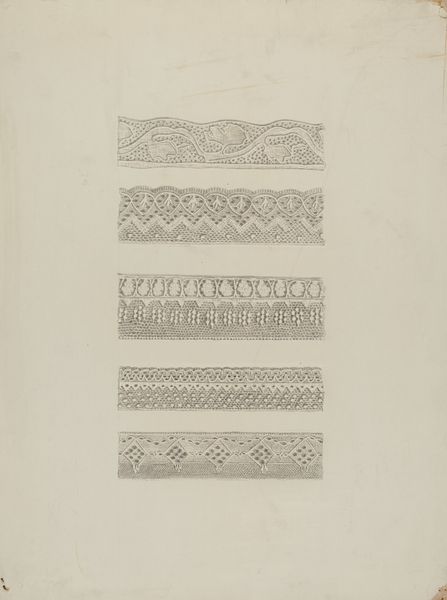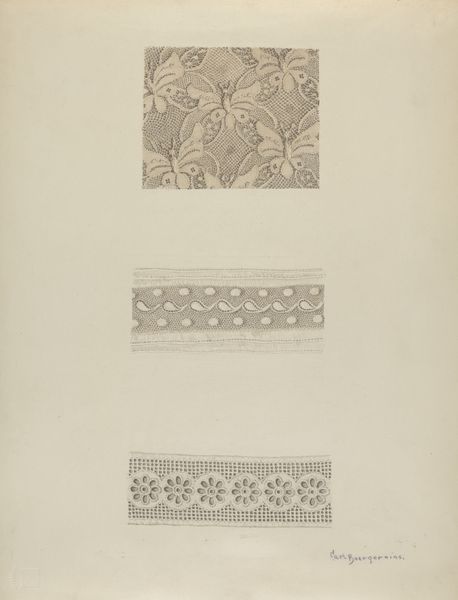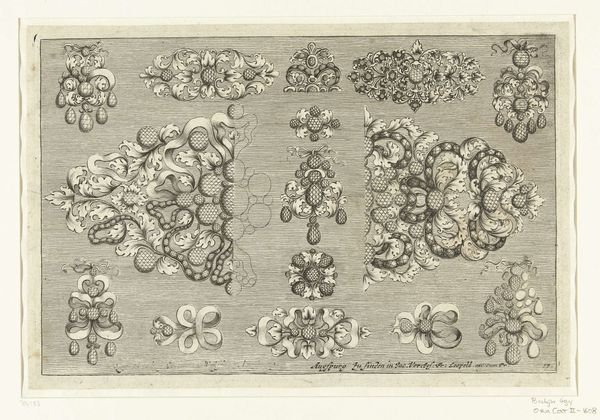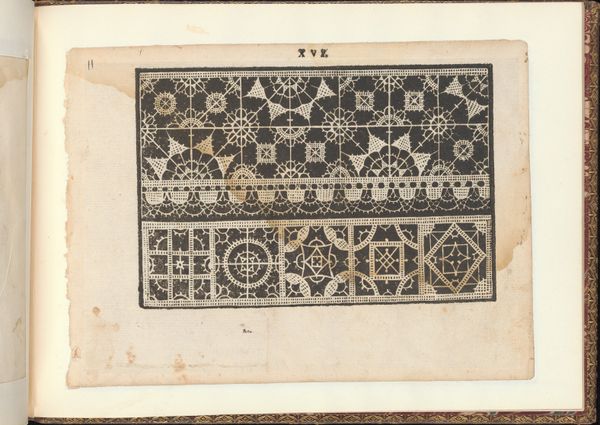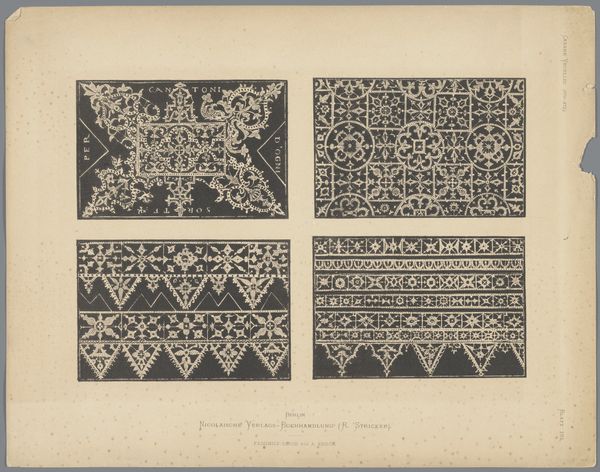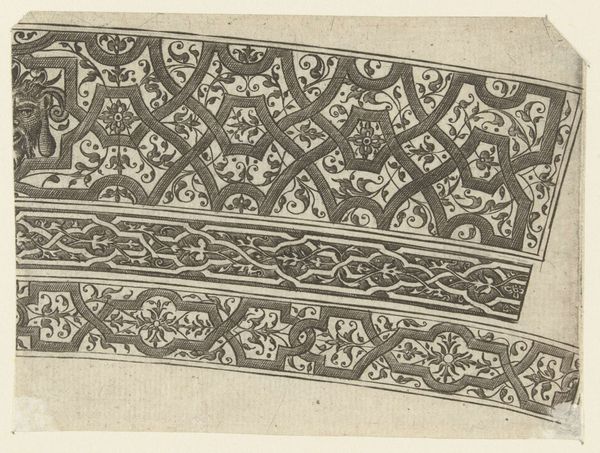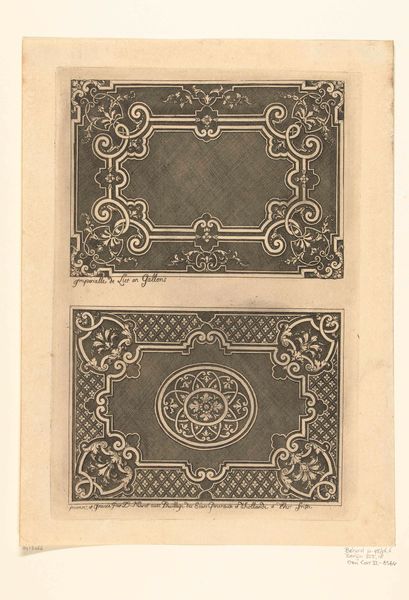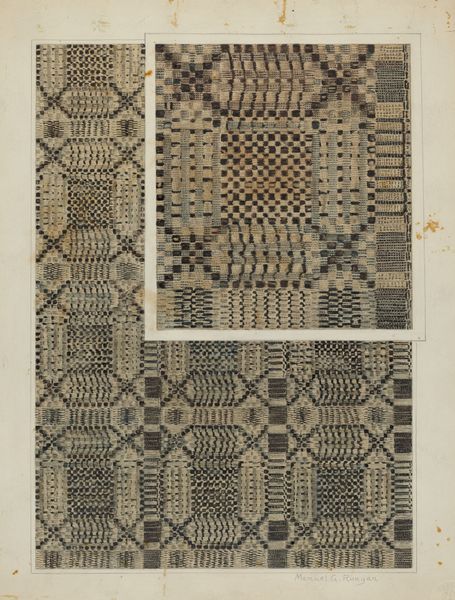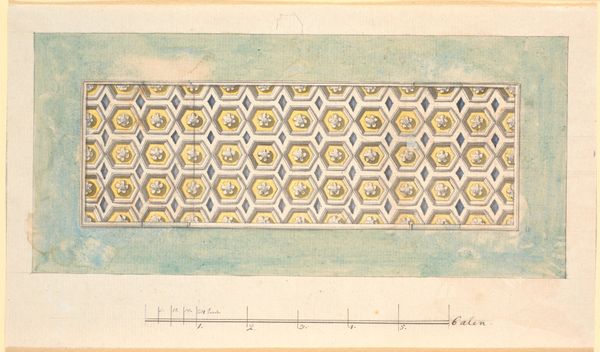
print, engraving, architecture
#
baroque
#
ink paper printed
# print
#
old engraving style
#
geometric
#
decorative-art
#
engraving
#
architecture
Dimensions: height 203 mm, width 296 mm
Copyright: Rijks Museum: Open Domain
Curator: This print, created between 1637 and 1640 by Jean Beuf, is entitled "Ornamenten op de Romeinse triomfboog in Orange, 1639," and presents a fascinating example of Baroque decorative art. Editor: My initial impression is how the geometric intricacy gives it a sense of organized density. It’s all lines and shapes, incredibly detailed, especially considering its age. The use of the engraved medium really enhances the formal quality. Curator: Absolutely. Consider how the Roman triumphal arch was employed politically throughout Europe. These meticulously rendered prints provided access to classical motifs, which allowed artists and architects to reference Roman imperial power during periods of state formation. The Baroque love of elaborate embellishment merged seamlessly with the symbolic weight of Rome. Editor: The interplay between light and shadow achieved through the engraving creates a striking visual texture. It gives a tangible dimension. The recurring hexagonal patterns juxtaposed with the classical floral relief are balanced formally and aesthetically. I wonder about the underlying mathematical structure. Curator: Exactly. Prints such as these circulated widely, functioning as source material within artisan workshops across Europe. An architectural engraving allowed a builder in, say, Amsterdam, to incorporate ‘Roman’ elements into the construction of a civic building, tying his local patron to a history of Roman governance and legitimacy. The decorative details reinforced social status and proclaimed ambition. Editor: I see how the print could act as a mediator between different societal spaces and aesthetic sensibilities, yet it’s this incredible precision in form that stands out most. There's no room for improvisation; only absolute geometrical clarity rules here. Curator: I agree with that formal assessment; its exactitude broadcasted cultural ideals. Thank you for guiding the analysis beyond the historic factors. Editor: Likewise; considering context and historical implication helped see beyond formal appreciation.
Comments
No comments
Be the first to comment and join the conversation on the ultimate creative platform.
